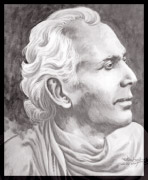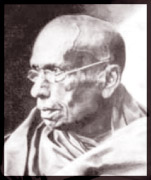Buddhagaya: part of Sri Lankan heritage
Prof. W. I. SIRIWEERA
Bodh Gaya or Buddhagaya in Eastern India is situated at a distance of
about 105 kilometres from Patna in the state of Bihar.
It is at Buddhagaya that the ascetic Siddhartha experienced the
supreme enlightenment under a Bo tree. It is a part of Sri Lankan
heritage not because the sapling of the Sri Maha Bodhi at Anuradhapura
was brought from there, but because the Sri Lankan Buddhist monks were
predominant there from the fourth century A.D. until the 13th century
A.D.

After the Buddha's Parinibbana, a shrine was established at
Buddhagaya and later a monastery was built by the emperor Ashoka
(277-236 B.C.) to the East of the Bodhi tree. According to the Mahawamsa,
at the inauguration ceremony of Mahathupa or the Ruvanvalisaya,
emissaries came from different regions of India including Buddhagaya.
Buddhist monks
Sri Lankan Buddhist monks and lay disciples too went on pilgrimage to
Buddhagaya from very ancient times. One of the inscriptions at
Buddhagaya datable to the second century B.C. refers to a donation made
to the shrine there, by a Buddhist pilgrim from Tambapanni.
Sihalavatthupakarana, a Pali text written during the late Anuradhapura
era mentions three occasions in which Sri Lankan Buddhist monks visited
the place by landing at Kaveripattana in South India and taking the
overland route.
But there was no pilgrims' resting place at the sacred precincts for
the Sri Lankans. Consequently King Kitti Sri Meghavanna (301-328) sent a
Sinhalese ambassador to the court at Pataliputra, obtained permission
from the ruler Samudragupta and constructed a monastery at Buddhagaya
exclusively for Sri Lankan Buddhist monks.
The seventh century Chinese travellers; Hieun-Tsang and Wang- Hieun-
Tse confirm that a Sinhalese King constructed a monastery at Buddhagaya
to provide accommodation to Sri Lankan monks. According to the latter,
the management of the monastery was also in the hands of the Sinhalese
monks.
Two inscriptions datable to the seventh century A.D. refer to
donations made to the shrine by two Buddhist monks. One of them named
Prakyakirthi belonged to the royal family of Sri Lanka.
Two inscriptions of the tenth century record the donation of a Buddha
image by a Sri Lankan named Udayasri and another donation by a Sinhalese
monk named Srignana.

Anagarika Dharmapala |

Ven. Hikkaduwe Sri
Sumangala Thera |
According to the Mahavamsa, King Vijayabahu I (1070-1110) of
Polonnaruwa sent several missions to offer gems and pearls to Mahabodhi
in India.
In the 13th century, most of the Buddhist centres in India were
destroyed by invading Turko-Afghan troops. But somehow, the monastery of
Sinhala Buddhist monks at Buddhagaya had escaped destruction. According
to the Tibetan monk Dharmasvamin who visited India between 1234 and 1236
A.D, there were Sinhala Buddhist monks living in Buddhagaya at the time
and they were in charge of the main shrine as well. Contemporary
inscriptions at Buddhagaya and Janibhiga in the Gaya region too confirm
that Sri Lankan Buddhist monks dominated the affairs at the sacred
precincts at Buddhagaya.
However, after the end of the 13th century, the role of the Sri
Lankan Buddhist monks at Buddhagaya diminished drastically. This was due
to the dominance and persecution by the Delhi Sultans and Mughal
emperors. After the 15th century, the Mahabodhi as a religious centre
was completely dilapidated and neglected. Later the precinct fell in to
the custody of Hindus and remained so until the middle of the 19th
century.
Religious centre
The Sinhala Buddhist revivalist, Anagarika Dharmapala (1864-1933)
while in India, traveled from Calcutta to Varanasi by train and later
reached Mahabodhi. He found that the place was covered with forest and
had no proper accommodation. The vestiges of buildings including the
Mulagandhakuti Vihara were scattered all over. The Dhammika Chetiya was
the only significant building that could be located. The sacred area was
now managed by a Hindu priest named Krishna Dayagiri Mahantha.
Thereafter along with Ven. Hikkaduwe Sri Sumangala, Anagarika
Dharmapala gave leadership for the establishment of the Mahabodhi
Society in 1891. Dharmapala was keen in getting the Mahabodhi complex in
to the hands of the Buddhists and filed a case in the court of Gaya to
obtain its custody. The case failed and Dharmapala made an appeal. The
Hindus led by Mahantha argued that since the Buddha was the
reincarnation of Vishnu, they had the right to the sacred precinct.
When the dispute continued for a long time, the first Indian
President, Rajendra Prasad, appointed a committee comprising four Hindus
and four Buddhists to resolve the issue. The committee decision was that
both the Buddhists and Hindus had a right to the sacred precinct. But
fortunately today the place is mainly a Buddhist site managed by the
Mahabodhi Society and Sri Lankan Buddhist monks. It was proclaimed a
World Heritage Site by the UNESCO in 2002. Thousands flock on pilgrimage
from Sri Lanka and other Buddhist countries to Buddhagaya, and it is
flooded with pilgrims particularly on the Vesak day. |



